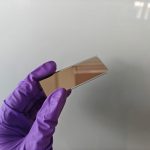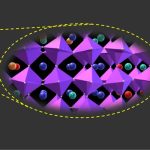
When we gaze at the windowpanes of ancient buildings, we often notice that the glass seems thicker at the bottom than at the top. Such an intriguing phenomenon is often explained by the notion that glass behaves like a supercooled liquid over time, causing it to flow gradually due to slow relaxations of its constituent atoms/molecules. It’s not just limited to structural glass – many materials exhibit glassy behaviour in their properties. Understanding this state is notoriously difficult, as evidenced by the 2021 Nobel Prize awarded to Giorgio Parisi for his seminal work on randomness and fluctuations in various systems.
One particularly interesting type of glass platform is the “electron glass”. Here, the interplay of random disorder and electron correlation results in slow relaxation of conductivity/resistivity when subjected to an external perturbation such as electric field, light, and so on. Further, as more charge carriers are introduced into the system, this glass-like behaviour diminishes well before the insulator-to-metal transition occurs. Consequently, good metals like copper do not display such glass-like properties.
In a recent study published in Nature Communications, a team of researchers from the Department of Physics, IISc; TIFR Hyderabad, Penn State (USA) and DESY (Germany) have found the first evidence of glass-like relaxation of electrons in the metallic regime of electron doped KTaO3 which is a classic example of incipient ferroelectric in its pristine form. More surprising is the observation that glassiness seems to stem from quantum fluctuations associated with the zero-point motion of atoms – a factor which is generally considered irrelevant in the description of window glasses. This opens a route for exploring glassy dynamics of electrons in a well-delocalised regime.
This article has also been selected for the journal’s “Editors’ Highlights” section on condensed matter research.






